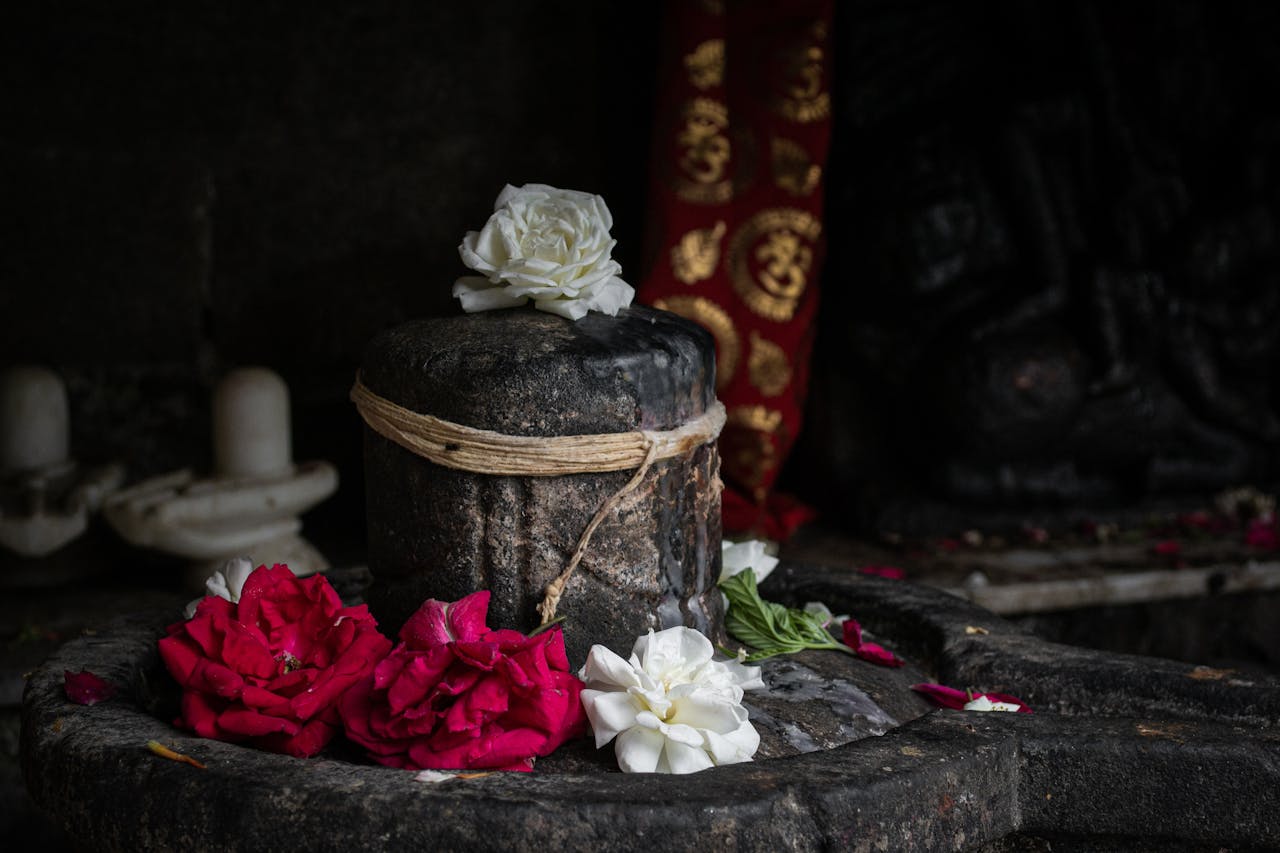Recently, a remarkable archaeological discovery was made by Dr. Dyavanapalli Satyanarayana at a temple in Chaitanyapuri, Hyderabad: the Chaturmukha Nandeeshwara Lingam. This rare artifact was unearthed from the debris, revealing significant insights into the temple’s architectural heritage and religious practices. The Chaturmukha Nandeeshwara Lingam is fundamentally a four-faced representation of Lord Shiva, symbolizing his omnipresence and multifaceted nature in Hindu philosophy.
One of the most notable physical characteristics of this lingam is its unique granite slab. Granite has long been favored in Hindu temple architecture due to its durability and aesthetic appeal. The precise craftsmanship observable in the Chaturmukha Nandeeshwara Lingam exemplifies the advanced skills of artisans from its era. The granite is not only robust but also contributes to the lingam’s sacredness, serving as a medium through which devotees direct their prayers and offerings.
An equally significant feature of this rare lingam is the intricately carved nandis positioned around it. The nandi, a sacred bull and vehicle of Lord Shiva, holds great importance in Hindu worship as it symbolizes faithfulness and devotion. Each nandi is carefully sculpted, featuring distinctive design elements that reflect the artistry of the temple’s builders. These carvings play a crucial role in enhancing the overall spiritual atmosphere of the temple, allowing worshippers to connect more deeply with their beliefs.
The discovery of the Chaturmukha Nandeeshwara Lingam is not merely an excavation of stone and craftsmanship, but a vital glimpse into the historical and cultural underpinnings of Hindu worship. It stands as a testament to the rich heritage that continues to shape religious practices today.
Artistic and Architectural Insights
The Chaturmukha Nandeeshwara Lingam is a significant artifact that embodies the aesthetic and spiritual dimensions of Hindu temple architecture. This unique representation features a Shivalinga flanked by four Nandi figures, the sacred bull of Lord Shiva, each oriented towards a cardinal direction. The symbolism attached to the four nandis is profound, representing the omnipresence and protection of Lord Shiva across the four corners of the universe. This design not only underscores the importance of Nandi in Shiva worship but also highlights the interconnectedness of the devotee with the divine.
Artistically, the Chaturmukha Nandeeshwara Lingam showcases intricate carvings that reflect the advanced craftsmanship associated with the temple’s construction period. The meticulous detailing of the figures speaks to the skill and devotion of the artisans who created it. The use of local stone adds to the uniqueness of this artifact, and the aesthetic qualities are emblematic of the temple’s regional style, which often incorporates elements that are reflective of its historical context.
In comparison to similar structures found in other temples across India, the Chaturmukha Nandeeshwara Lingam holds a distinct place. For instance, the famous Nandi statues in the Brihadeeswarar Temple in Thanjavur, while being grander, focus on a singular, imposing figure. In contrast, the four nandis in the Hyderabad temple emphasize multiplicity and a communal approach to worship, inviting devotees from all directions. Such variations reveal how regional influences shape the artistic expressions of faith, thereby allowing for a richer understanding of spiritual architecture.
The presence of this rare lingam reflects both the spiritual depth and the artistic heritage of Hindu culture. Emphasizing the creativity involved, it serves as a testament to the beliefs and traditions that have shaped temple architecture throughout India.
Implications of the Discovery for Future Research and Preservation
The recent discovery of the rare Chaturmukha Nandeeshwara Lingam at a temple in Hyderabad holds significant implications for future archaeological research and the preservation of historical sites within the region. The presence of such a unique artifact not only provides insights into the cultural and spiritual practices of ancient times but also highlights the need for ongoing exploration and understanding of our heritage. The successful unearthing of this lingam suggests that further excavations at the temple site could yield additional artifacts and information that contribute to our understanding of historical religious practices.
Moreover, this discovery prompts a reevaluation of currently protected sites, advocating for more comprehensive archaeological methodologies. Preservation of the Chaturmukha Nandeeshwara Lingam serves as a compelling reminder of the necessity for implementing effective conservation strategies for historical artifacts. As technologies advance, the integration of digital methods, such as 3D imaging and laser scanning, could play a critical role in documenting and preserving these significant finds, ensuring that they remain accessible for future research and education.
The role of historians, curators, and archaeological experts becomes increasingly important in safeguarding our cultural heritage. Collaboration among these professionals can lead to the development of guidelines and practices aimed at protecting archaeological sites and artifacts from environmental hazards and human interference. By advocating for stricter regulations on excavations and promoting awareness about the significance of preserving historical sites, they can foster a community committed to protecting these treasures for future generations. Additionally, such collaboration can pave the way for interdisciplinary studies, where art historians, archaeologists, and cultural anthropologists can engage in a holistic examination of historical artifacts, further enriching our understanding of past civilizations.
Representational Photo by Lisa and everlast jorney:

Leave a Reply